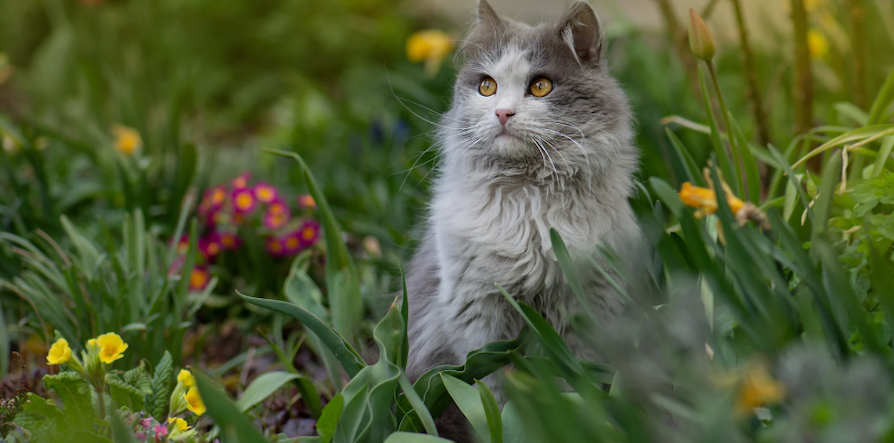For many of us, our gardens are a source of pride, beauty, and relaxation. They are also a place of endless curiosity and exploration for our pets. A fenced-in backyard or a sunny patio garden provides a wonderful, stimulating environment for our cats and dogs to play, dig, and chew. However, this outdoor sanctuary can harbor hidden dangers in the form of common plants that are surprisingly toxic if ingested. While some plant-related issues may only cause mild stomach upset, others can lead to severe organ damage and even be fatal. Knowing which plants to avoid is a critical step in creating a truly safe space for your furry family member.
1. The Allure of the Lily
While many plants pose a risk, the lily family stands out as an exceptionally dangerous threat, especially to cats. True lilies, such as the Easter lily, tiger lily, and Asiatic lily, contain a potent toxin that can cause irreversible and acute kidney failure in felines. What makes them so perilous is the fact that all parts of the plant are toxic—even ingesting a tiny amount of pollen, nibbling on a single leaf, or drinking water from the vase can be enough to cause a fatal reaction.
2. Common Garden Plants with Surprising Dangers
Beyond lilies, a wide variety of other popular plants can pose a serious threat to your pet.
Here is a list of some of the most common toxic plants found in gardens and backyards:
- Sago Palm: This popular ornamental plant is highly toxic to both cats and dogs. The seeds, or "nuts," are the most dangerous part and can cause severe vomiting, diarrhea, seizures, and liver failure.
- Rhododendron and Azalea: These beautiful flowering shrubs contain a substance called grayanotoxin. Ingestion can lead to vomiting, diarrhea, cardiac issues, and can even be fatal.
- Oleander: Known for its striking flowers, the entire oleander plant is highly toxic and can cause severe vomiting, cardiac arrhythmias, and a dangerous drop in body temperature.
- Foxglove: All parts of this plant contain cardiac glycosides, a toxin that can lead to heart failure, vomiting, and diarrhea.
- Tulips and Hyacinths: While the flowers are less toxic, the bulbs of these plants are a significant hazard. If dug up and ingested, they can cause severe drooling, vomiting, and diarrhea.
- Daffodils: Similar to tulips, the bulbs of daffodils are the most toxic part and can cause severe gastrointestinal upset, convulsions, and even heart problems.
- Marijuana: With the increasing legalization of cannabis, it's important to remember that it is toxic to pets. Ingestion can cause depression, vomiting, stumbling, and even coma.
3. What to Do If Your Pet Ingests a Toxic Plant
If you suspect your pet has eaten a toxic plant, don't wait for symptoms to appear. The sooner you act, the better the prognosis.
- Act Immediately: If you can, take a photo or a sample of the plant your pet may have ingested. This will help your veterinarian or a poison control expert identify the exact toxin.
- Call for Help: Contact your veterinarian or an animal poison control center right away. Do not attempt to induce vomiting or give your pet anything without professional guidance. The best course of action can vary depending on the plant and the animal.
- Seek Emergency Care: Be prepared to take your pet to an emergency veterinary clinic for immediate treatment. For any pet emergency in the Scottsdale area, Scottsdale Veterinary Clinic is here to help.
Creating a Pet-Safe Garden
Creating a pet-safe garden is a proactive and rewarding effort. By researching the plants in your yard and choosing pet-friendly alternatives, you can ensure your outdoor space remains a safe and enjoyable place for everyone in your family. If you're ever unsure about a plant or a potential pet emergency, remember that the team at Scottsdale Veterinary Clinic is a trusted resource for advice and care.

